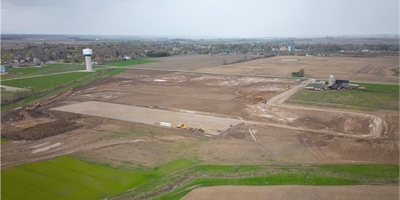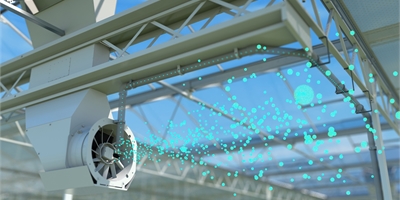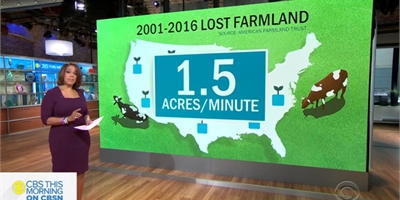Practical Hydroponics and Greenhouses May 2015Kazakhstan is currently unable to provide itself in off-season vegetables, especially in the winter.
Lees meer
Wind erosion has also had an impact in the northern and central parts of the republic because of the introduction of wide-scale dry land wheat farming. In the 1950s and 1960s much soil was lost when vast tracts of Kazakhstan’s prairies were plowed under as part of Khrushchev’s Virgin Lands agricultural project. By the mid-1990s, an estimated 60% of the republic’s pastureland was in various stages of desertification.
Agricultural sector
Although Kazakhstan is blessed with vast natural resources, agriculture is small part of the economy, representing under 10% of GDP. The country is the world’s sixth largest producer of wheat. Other crops include barley, cotton, sugar beets, sunflowers, flax, and rice. Potatoes, fruits, and vegetables are other significant food crops, but only meet 20% of consumer demands.
Kazakhstan’s vegetable production industry is similar to other Central Asian nations in that it is undergoing a process of conversion form the former planned economy to a market-oriented economy. The aim of these changes and developments, especially support for economics policies, is to restore the Republic’s capacity to produce enough agricultural products to feed its own population.
According to published data (Agro-world Kazakhstan), one of the main constraints of vegetable production is the fact that off-season vegetable production is low, well short of the estimated demand of nearly 90.000 tonnes. There is a significant lack of vegetable production in greenhouse structures.
To close the gap between the supply and demand of off-season fresh vegetables, the Kazakhstan government has formulated a master plan to develop the horticultural sector, including an increase in advanced greenhouse vegetable facilities. Since 2008, the country has been steadily increasing its greenhouse production capacity.
“We need to build greenhouses in large volume,” said Kanat Koshman, President of the Kazakhstan Greenhouse Association. “High-tech industrial greenhouses, hydroponic technology designed to increase yields two to three times,” he said.
Currently, 90% of all greenhouses are concentrated in the South Kazakhstan region, with 500 ha of greenhouses located in and around the city of Shymkent. The country depends on greenhouse technology and expertise from Russia, China and more recently from Holland.
“There is the concept of ‘greenhouse farming’ (up to 500m2, mainly plastic film and polycarbonate greenhouses), and the concept of ‘industrial greenhouses’ (advanced hi-tech greenhouses). Most greenhouses in Shymkent are used for greenhouse farming. Gut they give a harvest in early spring and autumn, not in the winter,” stressed Kanat Koshman.
The latest development in industrial greenhouses is a project at Pavlodar, a city in the north-eastern region of Kazakhstan. The project is designed to produce 1600 tons of vegetables annually. This 3.4 ha advanced greenhouse complex is a partnership between Kazakhstan company PTK, and Dutch greenhouse constructor Dalsem. Dalsem produces a complete greenhouse complex utilizing the latest equipment.
Andere mensen lezen
These solutions are produced according to modern methods and are based on the latest technologies. Hoogendoorn has several offices worldwide and a strong partner network. In this manner, modern horticultural technology can be coordinated completely with the growers’ desires and circumstances. In addition, Hoogendoorn provides practically oriented user training, 24-hour helpdesk and reliable local maintenance service.
The greenhouses will be fully equipped for the production of 10 hectares of tomatoes and eight hectares of cucumbers. One hectare will be prepared for the propagation of young plants and seedlings and another hectare for the cultivation of herbs. The growing area will be fully equipped with systems for heating, high pressure fogging, roof sprinkler system, substrate-irrigation, substrate cultivation, CO2 dosing, overhead (1000W) under intermediate (250W) lights and screens.
Unique to Dalsem is the complete control of design, manufacturing and execution of the project, including training, management and consultancy.
The propagation and herbs areas will be equipped with aluminum rolling benches, and ebb and flood irrigation. The energy building is equipped with four Rolls Royce Gensets of each 9,285MWe. Two of these Gensets are equipped with selective catalytic reactors for the production of CO2. Additionally, this building will be equipped with four hot water boilers with a capacity of 11.6 MWth each.
Besides the greenhouses, Dalsem will also build the industrial premises with the complete installation of the water utility room, cold rooms, offices and the loading and discharge section. Collection of rainwater and reuse of drainage water and purification of well water are included.
The climate computer will play an important role in the control of all processes in the 20-hectare business. Dalsem and Agro-Invest made a conscious choice for the Hoogendoorn climate computer iSii to manage every aspect, from climate to irrigation and energy. The most important reasons are the flexibility, reliability and user-friendliness of the system. On one hand, it is very easy to switch languages quickly. This allows the Dutch crop advisor and the Russian manager to log into the system and adjust the settings, each in their own language. In addition, all settings of the iSii climate computer are flexible configurable, allowing the computer to operate optimally at any given project.
– by Steven Carruthers.
wij zijn u graag van dienst
vul het contactformulier in of bel 015 269 5800
 Dalsem
Dalsem
Woudseweg 9 | 2635 CG Den Hoorn | The Netherlands | +31 (0) 15 2695800 |
-930-280.jpg)
-400-200.jpg)
-400-200.png)




